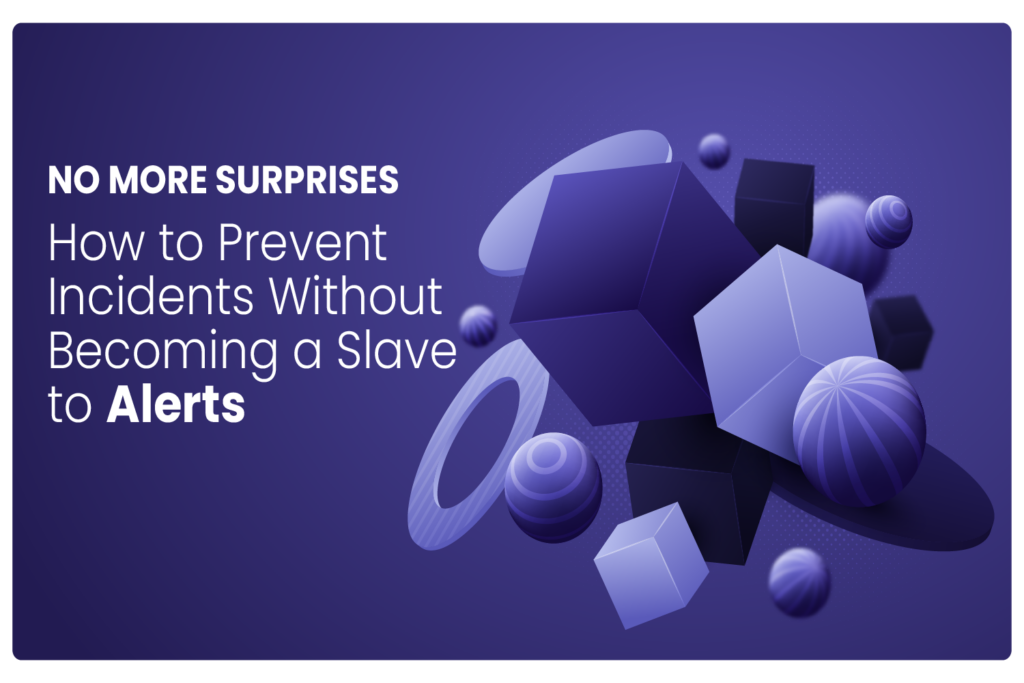

The frantic pace of modern DevOps has imposed a new routine: alert slavery. The pager goes off in the middle of the night, the team rushes to the dashboard, and most of the time, the alert is a false positive or a symptom of a bigger problem that hasn’t been fully understood yet. The result? Stress, burnout, and a culture of reaction instead of prevention.
The truth is that most traditional monitoring tools were created to alert on symptoms, not to diagnose causes. They tell you that the CPU is high, but they don’t tell you why. They warn you that the application is slow, but they don’t give you the database context to understand the root of the problem.
This article will show you how dbsnOOp’s proactive observability breaks this vicious cycle, allowing your team to prevent incidents intelligently, without having to react to every alert.
The False Sense of Security from Alerts
Traditional alerts are like the “check engine” light in a car: they warn you that something is wrong, but they don’t give you the full diagnosis. In complex microservices environments, where a single transaction can pass through dozens of services, a high CPU alert on the database server could be a symptom of an inefficient query deployed by another team.
Without the context and intelligence to correlate these events, your team loses valuable time:
- Triage Time: The team has to spend hours investigating the alert, diving into logs, checking infrastructure metrics, and talking to other teams.
- False Positives: The volume of irrelevant alerts or those that don’t represent a real risk is so high that, over time, the team starts ignoring them (alert fatigue). An excess of alerts not only causes fatigue; it erodes trust and team morale. Highly qualified professionals, who should be focused on architecting robust systems and innovating, are reduced to digital “firefighters.” The constant interruption by irrelevant alerts creates an environment of chronic stress, leading to burnout and high turnover. With each false alarm, the team loses a bit of its response capability, training itself to ignore what should be its main source of information.
- Symptom Treatment: The focus becomes putting out the fire, not fixing the root cause. The team might restart a service or scale up a machine, temporarily relieving the symptom, but leaving the fundamental problem to cause the next incident. The financial impact is equally devastating. Each minute of unscheduled downtime can cost thousands, or even millions, in lost revenue, depending on the industry. Worse still, prolonged downtime tarnishes the brand’s reputation, drives away customers, and can result in fines for non-compliance with service level agreements (SLAs). Reactive monitoring becomes, in practice, a hidden and uncontrollable operational cost.,

Proactive Observability: Acting Before the Incident
Proactive observability inverts the logic of the traditional alert. Instead of reacting to a symptom, it uses artificial intelligence to predict the problem and give you the complete diagnosis with the root cause.
- Degradation Detection: dbsnOOp’s AI doesn’t wait for the CPU to reach 100%. It monitors the behavior of each query and detects subtle and progressive performance regressions. For example, a query that is 2% slower each day, something imperceptible in the short term, can turn into a massive bottleneck in a week. dbsnOOp warns you that the checkout query is 10% slower than normal, giving you time to optimize it before the slowness impacts the end user.
- The End of Data Silos: Proactive observability is only possible when all your operational data is connected. Traditional monitoring creates silos: the DevOps team looks at infrastructure metrics, developers at application logs, and DBAs at the database. When an incident happens, the first step is a war-room meeting to manually correlate this information. dbsnOOp breaks this barrier by providing a unified view. It not only monitors database performance but automatically correlates this data with the application and infrastructure context. For example, an increase in latency in a query is immediately associated with the microservice that triggered it and the code commit that introduced it, eliminating guesswork and speeding up diagnosis in seconds.
- Automatic Correlation: When a problem happens, dbsnOOp already gives you the root cause. The platform automatically correlates the CPU spike with the query that caused it, the execution plan that changed, and the developer’s commit that made the alteration. It’s the only way to go from a metric to a diagnosis in seconds.
- Actionable Solutions: dbsnOOp goes beyond diagnosis. The AI suggests ready-to-use solutions, such as creating indexes or rewriting the query, freeing the team to focus on strategic improvements instead of firefighting.
No More Surprises, More Time for Innovation
Incident prevention isn’t about having more alerts; it’s about having smarter alerts. dbsnOOp frees you from pager slavery and gives you control. Instead of reacting, your team gains the ability to predict and solve problems before they affect user experience or the business’s financial results.
When you eliminate surprises, your engineering team and your DBA can focus on what really matters: innovation, architecture, and the evolution of your product.
Ready to go beyond monitoring and have true observability?
Schedule a demo here.
Learn more about dbsnOOp!
Learn about database monitoring with advanced tools here.
Visit our YouTube channel to learn about the platform and watch tutorials.


